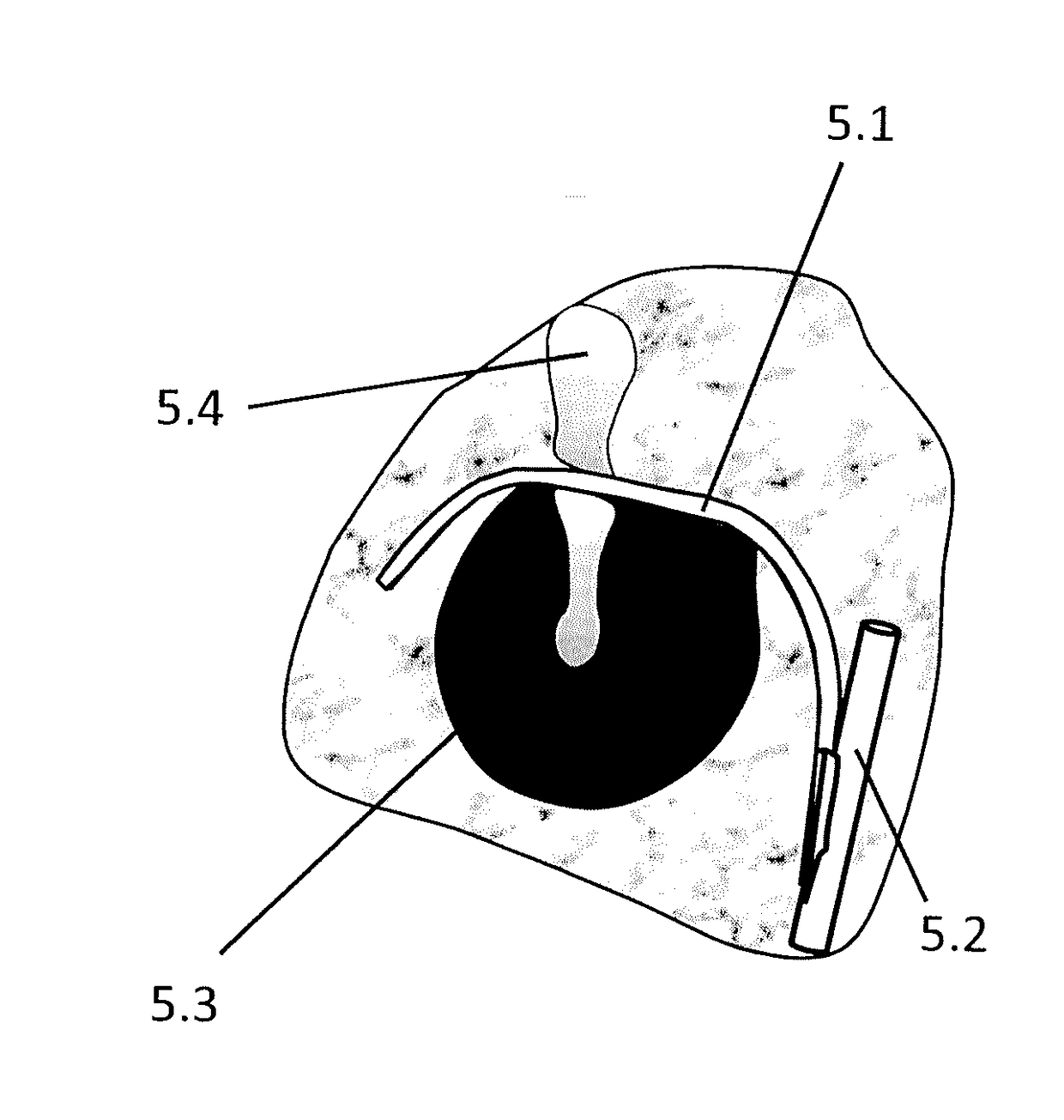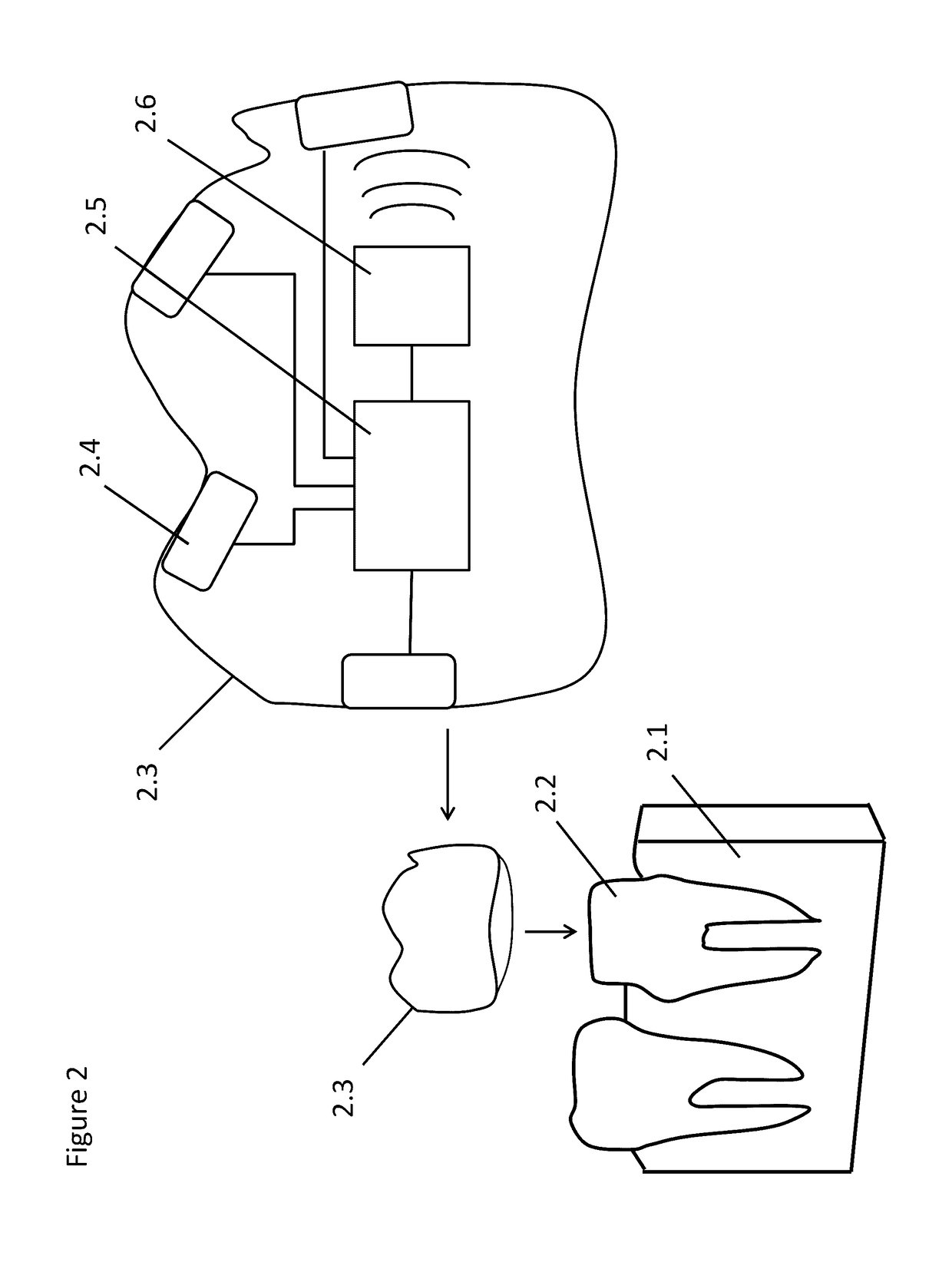Wireless implantable taste system
a taste system and implantable technology, applied in the field of prosthetic devices, can solve the problems of alcohol, taste dysfunction, affecting taste, etc., and achieve the effect of improving the perception of tas
- Summary
- Abstract
- Description
- Claims
- Application Information
AI Technical Summary
Benefits of technology
Problems solved by technology
Method used
Image
Examples
Embodiment Construction
[0031]Referring now to the drawings, and more particularly to FIG. 1, there is shown a schematic of basic neurophysiology of the human or animal gustation system, wherein information regarding taste is transmitted from the taste buds to the cerebral cortex via synapses in the brain stem and thalamus. Signals carried by fibers that innervate the taste buds travel through several different nerves to the gustatory area of the nucleus of the solitary tract, which relays information to the ventral posterior medial nucleus of the thalamus. Neuronal projections from the thalamus transmit taste information to the anterior insula-frontal operculum of the gustatory cortex.
[0032]Gustatory receptors are located in the gustatory epithelium in the oral cavity. When tastant molecules dissolved in saliva bind to taste receptors capable of receiving one or more particular tastants, gustatory information from the activated taste receptors is passed via the projecting nerve fibers to the nucleus of so...
PUM
 Login to View More
Login to View More Abstract
Description
Claims
Application Information
 Login to View More
Login to View More - R&D
- Intellectual Property
- Life Sciences
- Materials
- Tech Scout
- Unparalleled Data Quality
- Higher Quality Content
- 60% Fewer Hallucinations
Browse by: Latest US Patents, China's latest patents, Technical Efficacy Thesaurus, Application Domain, Technology Topic, Popular Technical Reports.
© 2025 PatSnap. All rights reserved.Legal|Privacy policy|Modern Slavery Act Transparency Statement|Sitemap|About US| Contact US: help@patsnap.com



